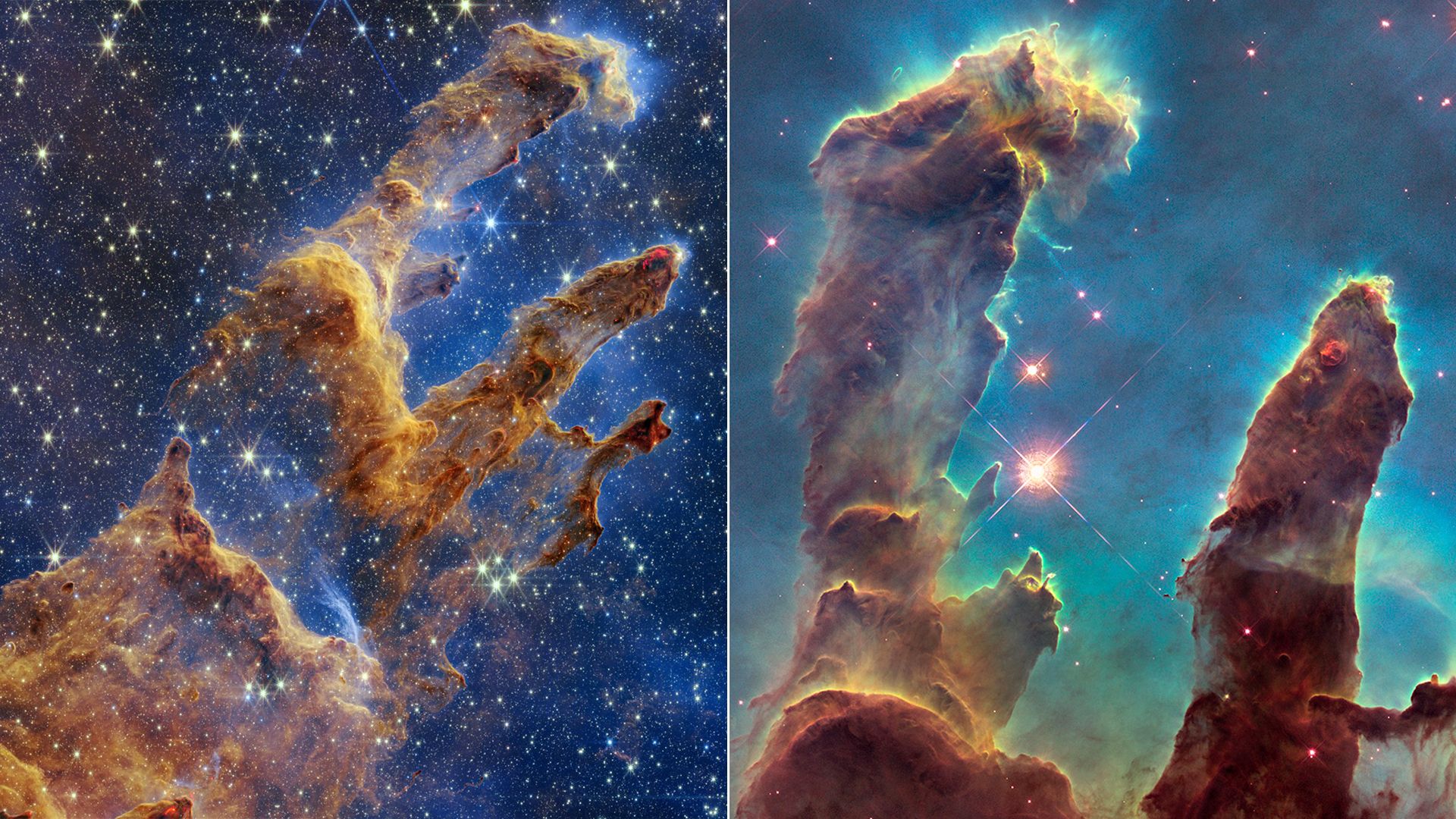Towers of dust stand out against a background of baby stars in a new, instant classic photo taken by the James Webb Space Telescope.
Why it matters: The photo revisits the Pillars of Creation, a part of space made famous by the Hubble Space Telescope. It also lays the groundwork for scientists to improve their understanding of this region and others like it.
- "Webb’s new view of the Pillars of Creation will help researchers revamp their models of star formation by identifying far more precise star populations, along with the quantities of gas and dust in the region," NASA said in a statement. "Over time, they will begin to build a clearer understanding of how stars form and burst out of these dusty clouds over millions of years."
Driving the news: This is one of the most hotly-anticipated images yet released by the JWST.
- The Pillars of Creation are a small part of the Eagle Nebula, a part of space where dense gas and dust birth new stars, about 6,500 light-years from Earth.
- The pillars in this view of the nebula are made of interstellar dust and gas that feed star formation. Bright red globes just outside of that dust are newly-formed stars and the squiggly red areas are caused by material being blasted out from those temperamental, baby stars.
- "When knots with sufficient mass form within the pillars of gas and dust, they begin to collapse under their own gravity, slowly heat up, and eventually form new stars," NASA added.

The JWST Pillars of Creation photo (left) vs Hubble's taken in 2014. Credits: NASA, ESA, CSA, STScI; Joseph DePasquale (STScI), Anton M. Koekemoer (STScI), Alyssa Pagan (STScI)
How it works: When JWST image processors open photos sent back to Earth by the telescope, they essentially look black.
- The JWST peers out into the universe primarily in infrared light — a part of the electromagnetic spectrum our eyes can't see — but it's so sensitive that it can tell the difference between various infrared bands.
- Image processors assign those bands colors that the human eye intuitively understands. Red is used for longer infrared wavelengths and blue for shorter, allowing scientists to represent the structures in an accurate way.
Go deeper: NASA's largest telescopes provide science and inspiration







